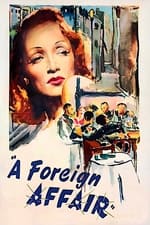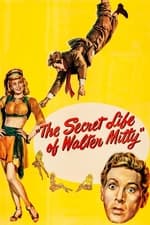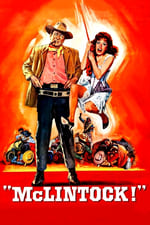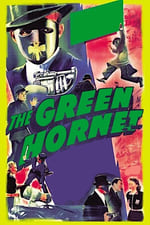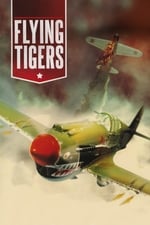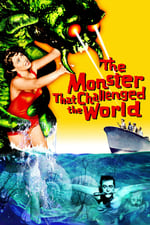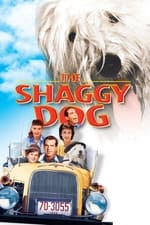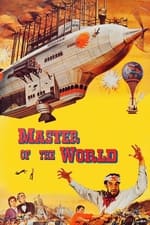Información personal
Conocido por Interpretación
Créditos conocidos 113
Sexo Masculino
Fecha de nacimiento 5 de abril de 1911
Fecha de defunción 20 de junio de 1963 (52 años)
Lugar de nacimiento Alden, Iowa, USA
También conocido como
- Gordon Wynnivo Jones
- Gordon W. Jones
Puntuación del contenido
100
¡Sí! ¡Buena pinta!
Iniciar sesión para informar de un problema
Biografía
From Wikipedia, the free encyclopedia
Gordon Wynnivo Jones (April 5, 1911 – June 20, 1963) was an American character actor, a member of John Wayne's informal acting company best known for playing Lou Costello's TV nemesis "Mike the Cop" and appearing as The Green Hornet in the first of two movie serials based on that old-time radio program.
Iowa-born Jones had been a student athlete and star football guard ("Bull" Jones) at University of California, Los Angeles, and had also played a few seasons of professional football. He started out playing small roles in Wesley Ruggles' and Ernest B. Schoedsack's The Monkey's Paw (1933), his first credited role in Sam Wood's Let 'Em Have It (1935), and Sidney Lanfield's Red Salute (1935). By 1937, he had moved on to a contract at RKO Radio Pictures. In 1940, Jones had the title role in The Green Hornet but did not reprise the role in the sequel.
Jones held a reserve commission in the army and was called into the service after filming his roles as "The Wreck" in My Sister Eileen (1942) and "Alabama Smith" in Flying Tigers (1942), a John Wayne vehicle that was one of the most popular action films of the war. This picture began Jones' 20-year onscreen association with Wayne, who was also a former football player at the University of Southern California.
Jones remained associated with the service after the war, encouraging college students to consider the Reserve Officers' Training Corps. After resuming his acting career in the late 1940s, Jones appeared in prominent roles in the John Wayne features Big Jim McLain (1952) and Island in the Sky (1953).
By the end of the 1940s, Jones had aged into a beefier screen presence and into very physical character roles. He was no longer a leading man but he had developed a comic villain persona which meshed with the work of Bud Abbott and Lou Costello. Jones' association with the duo began in The Wistful Widow of Wagon Gap (1947) with the role of the film's heavy, Jake Frame, and continued through their television series The Abbott and Costello Show. Jones played "Mike the Cop", Costello's hulking, loud-voiced antagonist. The program was produced for only two seasons, but ensured continued recognition for Jones via frequent reruns and a 21st Century DVD release.
Jones also remained busy in films and on television throughout the 1950s, in pictures that ranged from the sci-fi chiller The Monster That Challenged the World to the Tony Curtis/Janet Leigh sex comedy The Perfect Furlough, and on TV series ranging from The Real McCoys to The Rifleman. Jones also appeared in two very successful Disney movies during the early '60s, The Absent-Minded Professor and Son of Flubber. He played harried school coaches in both pictures. He also starred with Mitzi Green and Virginia Gibson in the short-lived TV sitcom So This Is Hollywood (1955), and had a recurring role as neighbor Butch Barton during the early years of The Adventures of Ozzie and Harriet
Jones returned to the John Wayne stock company portraying Douglas, the bureaucrat antagonist to Wayne's G.W. McLintock in the Western comedy McLintock! (1963). Jones unexpectedly succumbed to a heart attack on June 12, 1963, five months before the release of that movie.
Jones has a star on the Hollywood Walk of Fame on the West side of the 1600 block of Vine Street.
From Wikipedia, the free encyclopedia
Gordon Wynnivo Jones (April 5, 1911 – June 20, 1963) was an American character actor, a member of John Wayne's informal acting company best known for playing Lou Costello's TV nemesis "Mike the Cop" and appearing as The Green Hornet in the first of two movie serials based on that old-time radio program.
Iowa-born Jones had been a student athlete and star football guard ("Bull" Jones) at University of California, Los Angeles, and had also played a few seasons of professional football. He started out playing small roles in Wesley Ruggles' and Ernest B. Schoedsack's The Monkey's Paw (1933), his first credited role in Sam Wood's Let 'Em Have It (1935), and Sidney Lanfield's Red Salute (1935). By 1937, he had moved on to a contract at RKO Radio Pictures. In 1940, Jones had the title role in The Green Hornet but did not reprise the role in the sequel.
Jones held a reserve commission in the army and was called into the service after filming his roles as "The Wreck" in My Sister Eileen (1942) and "Alabama Smith" in Flying Tigers (1942), a John Wayne vehicle that was one of the most popular action films of the war. This picture began Jones' 20-year onscreen association with Wayne, who was also a former football player at the University of Southern California.
Jones remained associated with the service after the war, encouraging college students to consider the Reserve Officers' Training Corps. After resuming his acting career in the late 1940s, Jones appeared in prominent roles in the John Wayne features Big Jim McLain (1952) and Island in the Sky (1953).
By the end of the 1940s, Jones had aged into a beefier screen presence and into very physical character roles. He was no longer a leading man but he had developed a comic villain persona which meshed with the work of Bud Abbott and Lou Costello. Jones' association with the duo began in The Wistful Widow of Wagon Gap (1947) with the role of the film's heavy, Jake Frame, and continued through their television series The Abbott and Costello Show. Jones played "Mike the Cop", Costello's hulking, loud-voiced antagonist. The program was produced for only two seasons, but ensured continued recognition for Jones via frequent reruns and a 21st Century DVD release.
Jones also remained busy in films and on television throughout the 1950s, in pictures that ranged from the sci-fi chiller The Monster That Challenged the World to the Tony Curtis/Janet Leigh sex comedy The Perfect Furlough, and on TV series ranging from The Real McCoys to The Rifleman. Jones also appeared in two very successful Disney movies during the early '60s, The Absent-Minded Professor and Son of Flubber. He played harried school coaches in both pictures. He also starred with Mitzi Green and Virginia Gibson in the short-lived TV sitcom So This Is Hollywood (1955), and had a recurring role as neighbor Butch Barton during the early years of The Adventures of Ozzie and Harriet
Jones returned to the John Wayne stock company portraying Douglas, the bureaucrat antagonist to Wayne's G.W. McLintock in the Western comedy McLintock! (1963). Jones unexpectedly succumbed to a heart attack on June 12, 1963, five months before the release of that movie.
Jones has a star on the Hollywood Walk of Fame on the West side of the 1600 block of Vine Street.
Interpretación
|
||||||||||||||||||||||||||||||
|
||||||||||||||||||||||||||||||
|
||||||||||||||||||||||||||||||
|
||||||||||||||||||||||||||||||
|
||||||||||||||||||||||||||||||
|
||||||||||||||||||||||||||||||
|
||||||||||||||||||||||||||||||
|
||||||||||||||||||||||||||||||
|
||||||||||||||||||||||||||||||
|
||||||||||||||||||||||||||||||
|
||||||||||||||||||||||||||||||
|
||||||||||||||||||||||||||||||
|
||||||||||||||||||||||||||||||
|
||||||||||||||||||||||||||||||
|
||||||||||||||||||||||||||||||
|
||||||||||||||||||||||||||||||
|
||||||||||||||||||||||||||||||
|
||||||||||||||||||||||||||||||
|
||||||||||||||||||||||||||||||
|
||||||||||||||||||||||||||||||
|
||||||||||||||||||||||||||||||
|
||||||||||||||||||||||||||||||
|
||||||||||||||||||||||||||||||
|
||||||||||||||||||||||||||||||
|
||||||||||||||||||||||||||||||
|
||||||||||||||||||||||||||||||
|
||||||||||||||||||||||||||||||
|

